1870 France declares war on Prussia; the Franco-Prussian war
begins
1863 Engagement at Buffington Island on the Ohio River
1863 Siege of Fort Wagner, Charleston Harbor, South Carolina continues
1863 Morgan's raiders defeated
at Buffington Island top
Confederate General John Hunt
Morgan's raid on the North is dealt a serious blow when a large
part of his force is captured as they try to escape across the
Ohio River at Buffington Island, Ohio. Cut off from the south,
Morgan fled north with the remnants of his command and was captured
a week later at Salineville, Ohio. This was the last and most
daring of Morgan's four raids into Union-held territory. The
main purpose of the raid was to take pressure off of Chattanooga,
Tennessee, by drawing Union troops away from the army of General
William Rosecrans. It began on 02 July at Burkesville, Kentucky,
and continued into Indiana. Morgan departed with more than 2400
troopers, but he split his force on two occasions, and suffered
many casualties in skirmishes with Federal detachments. Morgan
and his forces rode east into Ohio and feigned an advance toward
a panicked Cincinnati, but bypassed the city and continued eastward
to Pomeroy, Ohio. His men were worn down by the long days in
the saddle, and the Yankee pursuit finally caught up at Buffington
Island, just outside of Pomeroy. While Morgan made plans to
cross the swollen Ohio River, Federal gunboats guarded the fords
and Union cavalry attacked the Confederates. In a short time,
Morgan lost 800 men, nearly all of who were captured. Morgan
escaped with 400 of his men, and fled north in search of a more
suitable place to cross the river—which they never found. Morgan
surrendered on July 26. |
1862 Forrest's 1st raid
1849 Se promulga una ley para incorporar a España al intento internacional
de establecer el Sistema Métrico Decimal.
1848 First
Woman's Rights Convention begins top
At the Wesleyan chapel in Seneca
Falls, New York, the Woman's Rights Convention — the first of
its kind ever held in the United States — commenced with almost
two hundred women in attendance. The convention was organized
by Lucretia Mott and Elizabeth Cady Stanton, two Quakers who
met at the 1840 World Antislavery Convention held in London.
As women, Mott and Stanton were
barred from the convention floor, and the common indignation
that this aroused in both of them was the impetus for their
founding woman's rights movement in the United States. In 1848,
at Stanton's home near Seneca Falls, the two women, working
with Martha Wright, Mary Ann McClintock, and Jane Hunt, sent
out a call for a women's conference to be held at Seneca Falls
beginning on July 19.
The announcement, published in
the Seneca County Courier on July 14, read, "A Convention to
discuss the social, civil, and religious condition and rights
of women will be held in the Wesleyan Chapel, at Seneca Falls,
N.Y., on Wednesday and Thursday, the 19th and 20th of July current;
commencing at 10 o'clock A.M. During the first day the meeting
will be exclusively for women, who are earnestly invited to
attend. The public generally are invited to be present on the
second day, when Lucretia Mott, of Philadelphia, and other ladies
and gentlemen, will address the Convention."
On July 19, 200 women convened
at the Wesleyan Chapel, and Stanton read the "Declaration of
Sentiments and Grievances," a treatise that she had drafted
over the previous few days. Stanton's declaration was modeled
closely on the Declaration of Independence, and its preamble
featured the proclamation, "We hold these truths to be self-evident:
that all men and women are created equal; that they are endowed
by their Creator with certain inalienable rights..." The Declaration
of Sentiments and Grievances then detailed the injustices inflicted
upon women in the United States and called upon U.S. women to
organize and petition for their rights.
The first day of the convention
was for women only, but on the second day men were invited to
intend — and some 40 did, including the famous African American
abolitionist Frederick Douglass. That day, the Declaration of
Sentiments and Grievances was adopted and signed by the assembly.
The convention also passed 12 resolutions — 11 unanimously — which
called for specific equal rights for women. The ninth resolution,
which declared "it is the duty of the women of this country
to secure to themselves their sacred right to the elective franchise,"
was the only one to meet opposition. After a lengthy debate,
in which Douglass sided with Stanton in arguing the importance
of female enfranchisement, the resolution was passed. For proclaiming
a women's right to vote, the Seneca Falls Convention was subjected
to public ridicule, and some backers of women's rights withdrew
their support. However, the resolution marked the beginning
of the women's suffrage movement in America.
The Seneca Falls Convention was
followed two weeks later by an even larger meeting in Rochester,
New York. Thereafter, national woman's rights conventions were
held annually, providing an important focus for the growing
women's suffrage movement. After years of struggle, the 19th
Amendment was adopted in 1920, granting US women the constitutionally
protected right to vote. |
1825 The American Unitarian Association is founded by members
of the liberal wing ofthe Congregational churches in New England.
1816 Survivors of French frigate Medusa rescued off Senegal after
17 days
1808 Guerra de la Independencia española. Batalla de Bailén
(Jaén), en la que las tropas napoleónicas de Dupont sufren su primera
derrota ante las españolas de Castaños. |
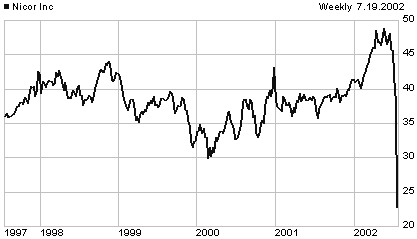 On
a July 19:
On
a July 19: 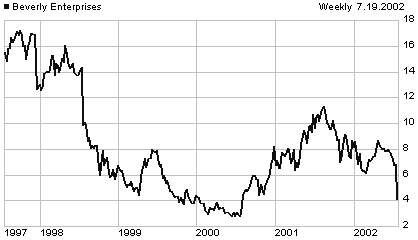
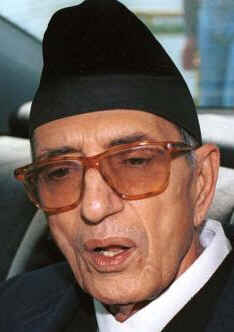 2001 The prime minister of Nepal, Girija Prasad Koirala, 76 [photo >],
hands his resignation to King Gyanendra. Koirala's most recent 15-month
term was beset by a bribery scandal involving the national airline's
lease of a plane, increasing attacks by Maoists guerrillas, and fighting
for a communist republic, and the 01 June 2001 massacre of the royal
family by Crown Prince Dipendra. Koirala's government was blamed, both
because soldiers assigned to protect the king and queen failed to do
so, and because of the belated, piecemeal way in which the official version
came out.
2001 The prime minister of Nepal, Girija Prasad Koirala, 76 [photo >],
hands his resignation to King Gyanendra. Koirala's most recent 15-month
term was beset by a bribery scandal involving the national airline's
lease of a plane, increasing attacks by Maoists guerrillas, and fighting
for a communist republic, and the 01 June 2001 massacre of the royal
family by Crown Prince Dipendra. Koirala's government was blamed, both
because soldiers assigned to protect the king and queen failed to do
so, and because of the belated, piecemeal way in which the official version
came out.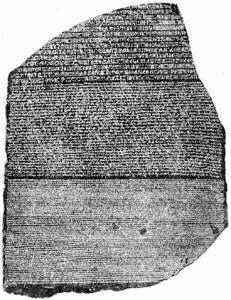 1799
Rosetta Stone discovered
1799
Rosetta Stone discovered 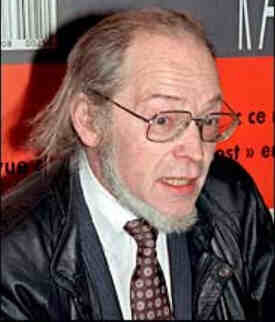 Deaths
Deaths